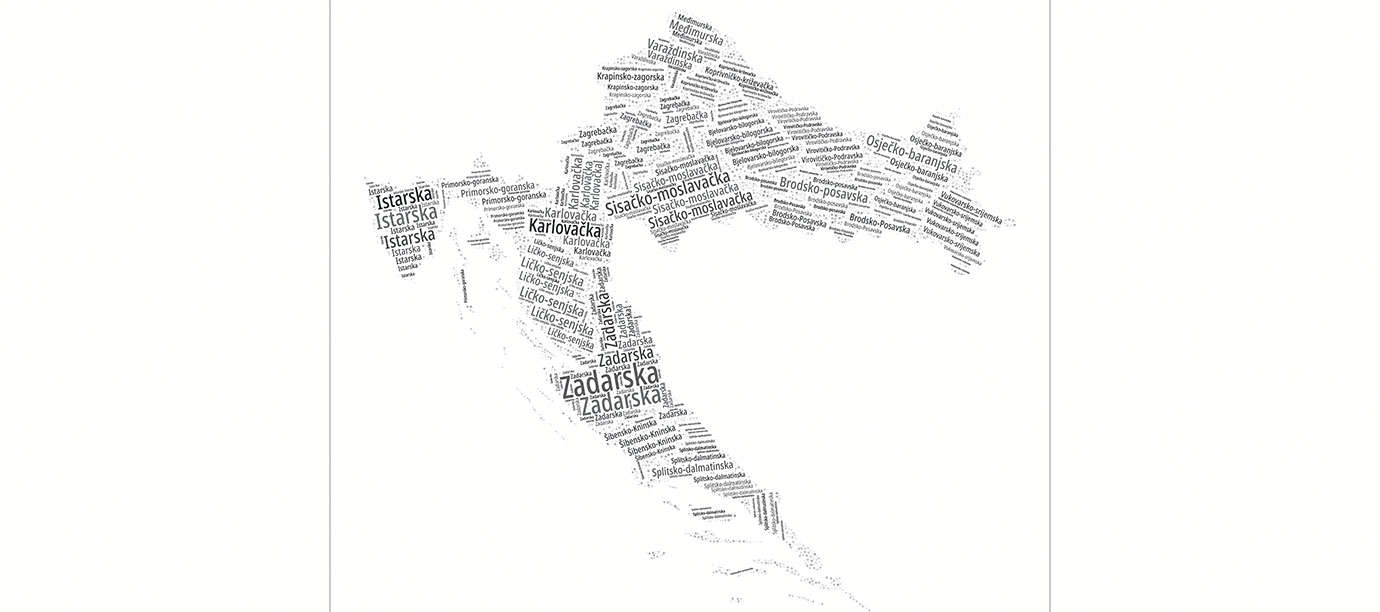What Language is Spoken in Croatia?

What is the official language spoken in Croatia ?
If you’ve ever wondered what language is spoken in Croatia, the answer is Croatian is the official language. It is very similar to the language in Bosnia and Herzegovina, Serbia and Monte Negro. It also has plenty of words in common with Slovenian, so citizens from those countries will understand each other. Croatia’s rich and evolving history has shaped its language over centuries. The Croatian you hear today is the product of more than 900 years of literary development. Below, we unveil the 5 interesting things you must know if you want to know what language is spoken in Croatia.
5 Key Facts about the Language in Croatia

3 Main Croatian Dialects
When discussing Croatia and its various regions, it’s interesting that some Croatians may have difficulty understanding one another. Croatia has three distinct dialects, and speakers of each dialect may struggle to comprehend one another if they speak in their dialects without simplifying their language. Neighboring languages largely influence this linguistic variation. Croatian is traditionally divided into three main dialects, each named based on the word they use for “what“:
- Nr.1 – Štokavian (Štokavski) – Word for “what”: što
Most widespread dialect, forming the basis of the standard Croatian language. - Nr.2 – Kajkavian (Kajkavski) – Word for “what”: kaj
It is predominantly spoken in northwestern Croatia, including regions around Zagorje, Varaždin, and parts of Zagreb. Strongly influenced by Central European languages like German and Hungarian. It has distinct grammar and vocabulary that can be unintelligible to speakers of other dialects. - Nr.3 – Čakavian (Čakavski) Word for “what”: ča
Common in coastal Croatia, particularly Istria, Kvarner, and parts of the Dalmatian Islands. It is known for its melodic sound and many archaic Slavic features.

Croatian vs. Serbian: What’s the Difference?
All nations, Croats, Serbs, and Bosniaks (Croats or Serbs converted to Islam during the Ottoman Empire 500 years ago) speak Slavic languages: Croatian, Serbian, and Bosniak. The latter is nothing more than a modern name for Serbo-Croatian. Both languages are so similar that the distinction is of no great importance to foreigners, and locally, there are, of course, some differences, but so minimal that people there understand each other completely, except when they don’t understand each other, and this has nothing to do with language, but with religion and politics.
Croatian vs. Serbian, Bosnian, and Montenegrin
Although Croatian, Serbian, Bosnian, and Montenegrin are mutually intelligible and share a common linguistic root, each is standardized independently. Differences exist in vocabulary, pronunciation, grammar nuances, and script (Serbian uses Cyrillic more commonly).

Croatian Alphabet Tips
If you’re planning a trip to Croatia, getting familiar with a few basics of the language can go a long way, especially when reading signs, maps, or menus. Croatian uses a 30-letter version of the Latin alphabet, and it includes some characters you won’t find in English.
Watch out for these unique letters: Č, Ć, Dž, Đ, Lj, Nj, Š, and Ž. They may look a little unfamiliar, but they represent specific sounds that are easy to pick up. For example:
- Dž sounds like the “j” in jeans (as in Džungla – jungle).
- Lj is like the “ll” in brilliant (try saying Ljubav – love).
- Nj is close to the “ni” in companion (think Njam – yum!).
These combinations are actually considered single letters in Croatian. So don’t be surprised if they have their own spots in dictionaries or alphabetical lists.
Also good to know: Croatian doesn’t use the letters Q, W, X, or Y in everyday words. You might still spot them in brand names or foreign terms, but they’re not part of the native alphabet.
Lastly, be mindful of subtle differences, especially Č and Ć. Both are pronounced like “ch,” but:
- Č is a hard “ch,” like in cheese, chocolate, or cherry.
- Ć is softer, like the “ch” in cheap, chilli, or chew.
Learning just a few of these sounds can make your travel experience smoother, and locals will appreciate the effort!
Croatian: It is logical but challenging.
Croatian is a systematic and complex language. It is known for its rich and nuanced tense structure, which includes four past tenses (Perfect, Aorist, Imperfect, and Pluperfect), one present tense, and two future tenses (Future I and Future II). While this may seem intimidating, the good news is that to speak Croatian effectively in everyday communication, you only need to master one key tense for the past, present, and future.

Reading Croatian: A Truly Phonetic Language
One of Croatian’s most learner-friendly aspects is its phonetic nature: each letter consistently corresponds to one sound. There are no silent letters, irregular spelling rules, or confusing combinations. Every letter is pronounced the same way every time, making reading and pronunciation much easier than in many other languages.
Learning Croatian is difficult, even though its logical structure and phonetic consistency are helpful. Achieving fluency requires time and practice, as mastering sentence construction, grammatical cases, and vocabulary can be challenging. While the language has features that assist learners, there are no magic shortcuts; achieving proficiency requires persistence.

Foreign Language Proficiency
Foreign Language Proficiency: Croatians are known for their high proficiency in foreign languages, especially among younger generations. English is widely spoken, particularly in urban centers, tourist destinations, and among professionals. German and Italian are also popular, mostly among older generations that used to work abroad during communism. These languages reflect historical ties and tourism patterns in past times. The main language spoken is English, which young people mostly use because of the internet, music, movies, and TV shows.
Language Learning in Schools: English is the most commonly taught foreign language in schools.
German, Italian, and French are frequently considered second or third languages.
FAQs About Croatian Language
Where and in which countries is the Croatian language spoken?
Croatian is a South Slavic language primarily used in Croatia, as well as in parts of Bosnia and Herzegovina and the Vojvodina region of Serbia. There are sizable diaspora communities in Europe, the USA, Canada, Australia, and Latin America. Approximately 5 million people speak it natively, with about another 2.5 million abroad.
What is the Croatian alphabet like?
The Croatian alphabet is based on the Latin script and consists of 30 letters. It is phonemic, meaning that each letter corresponds closely to a specific sound, which makes pronunciation straightforward once the rules are learned.
How to learn Croatian language?
Use language learning apps like Duolingo, Babbel, or Memrise.
Enroll in a Croatian language course at a local community college or online.
Practice speaking with native speakers through language exchange platforms like Tandem or HelloTalk. Immerse yourself in Croatian media, watch movies, listen to music, and read books in Croatian. Join Croatian language forums or social media groups for practice and tips. Set daily language goals and practice consistently.
What are must-know basic Croatian phrases in for beginners and travelers?
Hello – Bok – Pronunciation (approx.) bohk
Goodbye – Doviđenja – Pronunciation (approx.) doh-vee-JEH-nyah
Please – Molim – Pronunciation (approx.) MOH-leem
Thank you – Hvala – Pronunciation (approx.) HVAH-lah
Yes – Da – Pronunciation (approx.) dah
No – Ne – Pronunciation (approx.) neh
Excuse me – Oprostite – Pronunciation (approx.) oh-PROH-stee-teh
How much does this cost? – Koliko to košta? – Pronunciation (approx.) KOH-lee-koh toh KOHSH-tah
Bathroom – Toalet – Pronunciation (approx.) toh-AH-leht
Water – Voda – Pronunciation (approx.) VOH-dah
Do they speak English in Croatia?
Yes, English is commonly spoken in Croatia, especially in tourist areas and among younger people.
